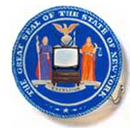Regardless of how people feel about the outcome of the presidential election controversy, most would agree that the openness of the proceedings helped ensure greater legitimacy. If the same situation had occurred in New York, says David Markus ’01, the story might have been very different.
Of the ten most populous states, only New York does not offer its residents televised broadcasts of the state government in action. Markus, who also holds a degree from Harvard’s John F. Kennedy School of Government, wants to change that. The New York State Assembly has adopted his third-year paper as a roadmap in its effort to get legislative proceedings televised gavel to gavel. If all goes according to plan, New Yorkers will soon be able to watch their leaders at work.
New York was once a national leader in providing its citizens public access to the operations of state government, but the state’s Community Access Network was shut down by Governor Mario Cuomo in 1992. “I hypothesize that one of the main reasons was that the legislature was getting too much press relative to the governor,” said Markus. “And the governor didn’t want to spend state money to help [publicize] the legislature.”
Working with Rebecca Medina, a 2001 graduate of the Kennedy School, Markus conceived of a plan to bring coverage of the legislature to residents of the Empire State. While refuting charges that the plan would cost too much, would give political minorities too much power, and would cause legislators to grandstand, Markus has tried to keep the focus on the big picture.
“In 2001, Californians got to watch their legislature grapple with the energy crisis, Massachusetts got to watch the death penalty debates in the House, and the entire world got to watch Florida debate how to deal with its electoral votes because the Florida channel was there,” said Markus. “I could be sitting in a house across from the New York state capitol and know more about what’s going on in Sacramento, Boston, or Tallahassee than I know about what’s going on in Albany.”
Not content to create a report that would gather dust on a shelf, Markus–who worked on the project on behalf of Common Cause of New York–held a press conference in the state capital to present the plan and demand action. The results were swift and significant–the State Assembly immediately promised independent, gavel-to-gavel coverage of its proceedings. The legislature is currently studying how to implement the plan, and Markus is confident that broadcasts will begin soon. New York residents will be watching.
